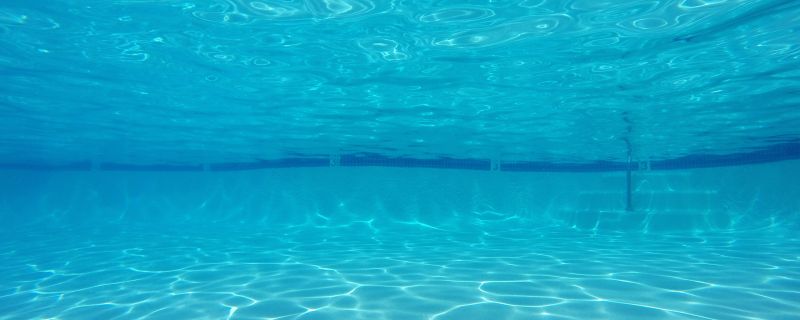
- Property & Casualty
- No comments
Providing equal opportunity to people with disabilities is the fundamental principle of the Americans with Disabilities Act (ADA). Prior to this, people with disabilities were excluded from participating in many recreational activities, including going in a swimming pool.
In September 2010, the Department of Justice (DOJ) published updated regulations under the ADA that adopted the 2010 Standards for Accessible Design (2010 Standards). The 2010 Standards set minimum requirements for making swimming pools, wading pools and spas (pools) accessible. Both newly constructed and existing pools must meet the 2010 Standards. These requirements ensure that people with disabilities can enjoy the same activities—a community swim meet; private swim lessons and swimming in a hotel pool—at the same locations and with the same independence, ease and convenience as everyone else.
Public entities and public accommodations must ensure their existing pools are in compliance; and state and local governments must also make recreational programs and services, including swimming pool programs, accessible to people with disabilities.
The 2010 Standards establish two categories of pools: large pools with more than 300 linear feet of pool wall, and smaller pools with less than 300 linear feet of wall. Large pools must have two accessible means of entry, with at least one being a pool lift or sloped entry; whereas, smaller pools are only required to have one accessible means of entry, either a pool lift or a sloped entry.
Existing Pool–Program Accessibility
Individuals with disabilities cannot be excluded from or denied participation in state and local government programs, services or activities because a facility is inaccessible or unusable. This means that all programs, services and activities must be accessible to these individuals, unless doing so results in a fundamental alteration in the nature of the program or in an undue financial and administrative burden. This requirement is known as “program accessibility.”
Program accessibility applies to all pool-related programs, services and activities, such as swimming programs. Program accessibility does not typically require that every pool be made accessible. However, if you have only one existing pool, you must take steps to ensure that its swimming program is accessible.
You may determine which method—either structural changes or acquiring new equipment—you use to meet your program accessibility obligations. When structural changes are made to existing pools, including installation of a fixed pool lift, the changes must comply with the 2010 Standards. If you choose to acquire equipment—such as a portable lift—to provide program accessibility, you should select equipment that includes features required by the 2010 Standards, including independent operation by individuals with disabilities. When choosing to purchase equipment or to make structural changes, you should factor in staff and financial resources required to maintain program accessibility. Accessible pool features must be available whenever the facility is open to the public. Sharing accessible equipment between pools is not permitted, unless it would result in an undue burden to provide equipment at each one.
You should regularly reassess your compliance with program accessibility, as it may become necessary to acquire new accessible equipment or make structural modifications.
To determine which pools must be made accessible, public entities should consider the following factors:
- How to provide swimming programs in the most integrated setting appropriate
- The ways in which people participate in the programs (e.g., individually, in families or in youth groups)
- Locations where the programs are offered
- What programs are offered at each pool and to whom (e.g., family swims, children’s swimming lessons, older adult exercise classes and high school swim meets)
- Which pools are accessible and to what extent
Existing Pools–Readily Achievable Barrier Removal
The ADA requires that places of public accommodation such as hotels, resorts, swim clubs and sites of events open to the public remove physical barriers in existing pools to the extent that it is readily achievable to do so. “Readily achievable” means that it can be easily accomplished and carried out without much difficulty or expense.
Determining what is readily achievable varies from business to business and sometimes from one year to the next. Changing economic conditions can be taken into consideration in determining what is readily achievable.
For an existing pool, removing barriers may involve installation of a fixed pool lift with independent operation by the user or other accessible means of entry that complies with the 2010 Standards. If installation of a fixed lift is not readily achievable, you may consider alternatives, such as use of a portable pool lift that complies with the 2010 Standards. It is important to note that the barrier removal obligation is continuous, and it is expected that a business will take steps to improve accessibility over time. When selecting equipment, factor in the staff and financial resources needed to keep the pool equipment available and in working condition.
A non-fixed lift purchased before March 15, 2012, that otherwise complies with the requirements in the 2010 Standards for pool lifts (such as seat size, etc.), may be used, as long as you keep it in position for use at the pool and operational during all times that the pool is open to guests. Because of a misunderstanding by some pool owners regarding whether the use of portable pool lifts would comply with barrier removal obligations, the DOJ will not enforce the fixed elements of the 2010 Standards against those owners or operators of existing pools who purchased portable lifts prior to March 15, 2012. Additionally, the DOJ will not enforce the 2010 standards against those who keep the portable lifts in position for use at the pool and operational during all times that the pool is open to guests, so long as those lifts otherwise comply with the requirements of the 2010 Standards. Generally, lifts purchased after March 15, 2012, must be fixed if it is readily achievable to do so.
To determine which pools must be made accessible, public accommodations should consider the following factors:
- The nature and cost of the action
- Overall resources of the site or sites involved
- The geographic separateness and relationship of the site(s) to any parent corporation or entity
- The overall resources of any parent corporation or entity, if applicable
- The type of operation(s) of any parent corporation or entity, if applicable
New Pool Construction and Alterations
The 2010 Standards also require that all new facilities built by state and local governments, public accommodations and commercial facilities must be accessible to and usable by persons with disabilities. Review the standard before you begin construction.
A physical change to a swimming pool, which affects or could affect the usability of the pool, is considered an alteration. When pools are altered, the alterations must comply with the 2010 Standards, to the maximum extent feasible. Changes to the mechanical and electrical systems, such as filtration and chlorination systems, are not alterations. You must ensure that an alteration does not decrease accessibility below the requirements for new construction. For example, if a hotel installs a fixed pool lift powered by water pressure, it must ensure that the hose connecting to the lift does not create a barrier across the accessible route to the pool.
Subject to other provisions of this guidance, all existing pools of public entities and public accommodations must comply with the 2010 Standards to the extent required under the program accessibility or readily achievable barrier removal requirements.
Maintenance and Use of Accessible Features
Accessible pool features must be maintained in operable, working condition so that persons with disabilities have access to the pool whenever it is open to others. For example, a portable pool lift may be stored when it is closed, but it must be at poolside and fully operational during all open pool hours.
Businesses should recognize that certain types of equipment may require more staff support and maintenance than others (e.g., ensuring there are enough batteries for a pool lift to maintain a continued charge during pool hours) and should plan for these issues and modify operational policies as needed to provide accessible means of entry while the pool is open.
Make sure your staff is properly trained on how to use accessibility equipment. Training should include what accessible features are available, how to operate and maintain them, and necessary safety precautions.
Your Compliance Experts
Not sure whether you are compliant with ADA regulations? Contact The Safegard Group, Inc. today to discuss all your available options. We can help you navigate the complex legal landscape and make your pools available and fun for everyone.

